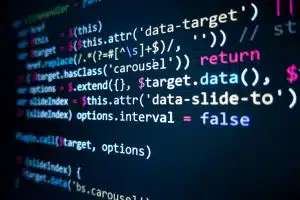Zero Robotics: All You Need to Know
The International Space Station is the ultimate lab in space where all the cool space research happens, but what if you can be part of it? Meet Zero Robotics—it’s a coding competition where students get to write code for satellites aboard the station. This hands-on experience not only makes learning about space fun but also helps students like you get better at coding, problem-solving, and teamwork.
And we’ve got all you need to know about joining Zero Robotics! We’ll talk about what you need to do, when you need to do it, and why it’s totally worth your time.
What Is Zero Robotics?
Zero Robotics is this cool competition where students get to write code for SPHERES (Synchronized Position Hold Engage and Reorient Experimental Satellites), which are these satellites inside the International Space Station (ISS). It kicks off online, where teams dive into programming these SPHERES to tackle a fresh challenge each year. They go through different virtual rounds using a simulation that mimics the real deal, until the cream of the crop is selected for the live showdown aboard the ISS. An astronaut oversees the final match in microgravity, with the whole thing streamed live.
Zero Robotics history
Started back in 2009 by the MIT Space Systems Laboratory (SSL) and astronaut Greg Chamitoff, Zero Robotics has a mission to get high schoolers pumped about ISS research. It’s kind of like FIRST Robotics but with a focus on crafting autonomous software instead of hardware and human controls.
The very first run involved a couple of schools from up north in Idaho, leading up to the inaugural ISS face-off on December 9, 2009. Since then, it’s grown big time, even becoming part of NASA’s Summer of Innovation and hosting a nationwide high school tournament in 2010.
Zero Robotics tournaments
Zero Robotics offers two separate tournaments: the High School Tournament and the Middle School Summer Program. Each tournament is carefully crafted to provide tailored learning experiences suitable for its respective age group. The best part? Both tournaments are completely free of charge.
How to Join the Zero Robotics High School Tournament
The High School Tournament is geared towards students in grades 9-12 and runs from September to December annually. Together, participants tackle complex programming challenges, leading up to an exciting final showdown aboard the ISS.
Who can join Zero Robotics High School tournament?
To join, you have to be between 14 and 20 years old and not already in college or some other post-secondary education.
In particular, Zero Robotics is for high school students (grades 9-12), upper secondary students, and similar pre-college programs in the USA, Russia, European Space Agency (ESA) member states, and Australia.
Team setup
Teams can have anywhere from 5 to 20 students. If an ESA team has more than 10 students, they need to explain why they need such a big squad in their application.
Each team should have a main mentor from their school or group, like a teacher or staff member. This mentor helps steer the ship, making sure everyone has what they need tech-wise, like computers with internet, a good browser (think Chrome or Firefox), and JavaScript and Flash turned on.
Usually, each school or group can only register one team of 5 to 20 students, unless they get special permission. If a school gets the nod for multiple teams, each team needs at least 12 students, and they have to operate solo, no mixing or trading players during the tournament.
Each student has to set up their own Zero Robotics account, and the team’s mentor or leader should keep a full list of everyone on the team. Only folks listed on the official Zero Robotics site are considered part of the squad, keeping things fair and square.
As for the specifics of the next cycle, keep an eye on the Zero Robotics announcements page for updates.
How to Join the Zero Robotics Middle School Summer Program
The Zero Robotics Summer Program is a 5-week coding challenge where students dive into programming NASA’s Astrobee satellites up on the International Space Station. First, you’ll tackle challenges online with your team, coding the Astrobee bots to ace an annual task. Then, if you make the cut, you could find yourself in a live showdown aboard the ISS, guided by a real astronaut and streamed live to schools everywhere.
No coding experience? Don’t worry. They’ve got you covered with free training, tools, and tech support online.
Who can join Zero Robotics Middle School Summer Program?
The Zero Robotics Middle School Summer Program is open to middle school students, specifically rising 5th through rising 9th graders. Schools, organizations, and universities that serve middle school students are eligible to participate.
Each team must consist of 7-20 students and have a designated mentor or teacher to lead the team.
Cost
The program is free of charge. Educators and mentors also receive a free coding curriculum, teacher training, and technical assistance.
How to register
To join the 2024 Zero Robotics Summer Program, complete the initial registration form by the deadline of May 22, 2024. Teams are accepted on a rolling basis, so early registration is encouraged. Spaces are limited, so hop on board while you can.
You can register here.
Program dates and schedule
The 2024 program runs from June 24, 2024, to August 2, 2024. Specifically:
| Week | Dates |
| Week 1 | June 24 – June 28, 2024 |
| Week 2 | July 1 – July 5, 2024 |
| Week 3 | July 8 – July 12, 2024 |
| Week 4 | July 15 – July 19, 2024 |
| Week 5 | July 22 – July 26, 2024 |
| Week 6 (Finals Week) | July 29 – August 2, 2024 |
Weekly schedules can vary by team, but the suggested time commitment is 10 to 15 hours per week to ensure the best experience for students.
Other important dates
Here are other important dates you need to take note of:
| Event | Important Dates |
| Practice Code Deadline | July 5, 2024, 5pm local time |
| Field Day Week | July 8 – 12, 2024 (Events determined locally) |
| Career Day | July 10, 2024, hosted by Aerospace Corporation (online event) |
| Round One Code Deadline | July 15, 2024, 12pm local time |
| Alliance Announcements | July 16, 2024, 1pm EST (online webinar) |
| Alliance Code Development | July 16 – 21, 2024 |
| ISS/Final Code Deadline | July 22, 2024, 5pm local time |
| International Space Station Finals | August 2, 2024 (Live finals date/time subject to change by NASA) |
Teacher/mentor training
MIT and ILC will conduct in-person and online trainings for educators throughout May and early June. Details of the training sessions will be sent upon registration confirmation.
Webinars
Zero Robotics will host three informational webinars:
- Wednesday, February 28th, 12:30 pm EST
- Wednesday, March 20th, 3:00 pm EST
- Wednesday, April 10th, 1:30 pm EST
To request a private informational webinar, email [email protected].
Commitment form and notification
Teams invited to participate must complete the commitment form by Friday, May 3, 2024. Acceptance is on a rolling basis, and space is limited. Make sure to confirm your participation promptly to secure your spot.
If you have any questions, contact Katie at [email protected] or email [email protected].
Zero Robotics Middle School Summer Program Curriculum
Check out what’s in store for each week of the Zero Robotics Middle School Summer Program:
Week 1: To Infinity and Beyond . . .
Students are introduced to the SPHERES satellites and the Zero Robotics game. They learn the basics of programming, the structure and elements of a computer program, and the fundamentals of maneuvering the SPHERES using math and physics. By the end of the week, students can complete short programming tasks and work in teams to solve problems.
Week 2: Developing a Strategy
This week focuses on understanding the math and physics concepts needed to maneuver the SPHERES satellites, such as forces, motion, and vectors. Students participate in a “Field Day” to act out the game and develop strategies. They also complete advanced programming tasks and work in teams to refine their game strategies and coding skills.
Week 3: Time to Play!
Students code their team players and participate in an Intramural Competition. They test their ideas and debug their programs. By the end of the week, students understand more complex concepts like kinematics and are prepared to submit their best code for a practice Regional Competition.
Week 4: Going the Distance
Students review the results of the practice Regional Competition and finalize their game strategy. They complete their programs and select a single entry for the Regional Competition. Teamwork remains a key focus as they solve problems related to their game strategy and coding.
Week 5: Reach for the Stars
In the final week, students learn whether their program will be run live on the ISS. They explore how science and engineering concepts apply to the real world and learn about careers in STEM. The program aims to inspire students about space exploration and potential STEM careers while reinforcing the importance of their experience.
For more detailed information, visit the Zero Robotics Middle School Curriculum page.
Reasons to Join Zero Robotics
Zero Robotics offers a range of benefits that go beyond what you might typically find in a classroom setting. Participating in this competition can provide you with the following benefits:
1. Hands-on coding experience
One major draw of Zero Robotics is the opportunity to dive into coding in a hands-on way. Students actually write code that controls NASA’s Astrobee satellites. You’ll see the direct impact of your programming as you tackle real-world challenges.
The competition kicks off with virtual simulations that recreate conditions aboard the ISS, allowing you to test and tweak your code. This practical experience is invaluable for understanding the ins and outs of coding and debugging, especially in high-pressure situations.
2. Exposure to space technology
Zero Robotics opens doors to the world of space technology. You’ll get to learn about and interact with the Astrobee satellites used in the International Space Station. This exposure breaks down the mystique surrounding space tech, making it more accessible and inspiring.
It might even spark an interest in pursuing careers in aerospace or related fields. Understanding how these satellites function and are controlled provides insight into advanced technologies and the future of space exploration.
3. Teamwork and collaboration skills
In the competition, you’ll be part of a team ranging from 7 to 20 members. This setup fosters strong teamwork and collaboration skills. Each team member plays a crucial role, and success hinges on effective collaboration.
You’ll learn to communicate clearly, manage your time efficiently, and capitalize on each other’s strengths to tackle complex problems. These skills are invaluable not just in STEM but in any career path. Plus, collaborating with peers builds a sense of camaraderie and underscores the importance of working toward shared goals.
4. Real-world problem solving
Zero Robotics throws students into the deep end of real-world problem-solving. The competition presents challenges that demand creative and practical solutions. Picture this: programming satellites to tackle tasks in a simulated space setup. Think navigating obstacles, managing resources, and executing specific missions.
This experience is like a gym for your critical thinking and problem-solving muscles. Students have to craft strategies to overcome technical hurdles, giving them a crash course in effective problem-solving. By diving into these complex tasks, students gain a deeper grasp of how to tackle challenges head-on – skills that are pure gold in any professional arena.
5. Access to mentorship and training
Zero Robotics doesn’t just toss students into the deep end without a life preserver. Participants get access to mentorship and a trove of training resources. Each team gets a mentor, usually a teacher or a pro in a related field, to provide guidance and oversight.
Plus, the program offers free coding lessons, teacher training, and technical support. This safety net ensures students are prepped and pumped to take on the competition’s challenges. Having a mentor also means students get to pick the brains of seasoned pros, which can be a game-changer for their academic and career paths.
6. Opportunities for innovation and creativity
Zero Robotics is all about thinking beyond the obvious and unleashing creativity. The yearly challenge pushes students to dream up fresh strategies and algorithms to boss around those satellites. It’s like a playground for creativity and original thinking.
This aspect of the competition pushes students to stretch their limits and explore new frontiers in programming and robotics. By nurturing an environment that celebrates innovation, Zero Robotics fosters a mindset of constant growth and adaptability – traits that future engineers and scientists can’t live without.
7. Enhancing college applications
Adding Zero Robotics to your college application is a big deal. It shows colleges your knack for diving into challenging STEM activities, proving your dedication, skills, and ability to work in teams. Colleges love applicants with hands-on experience and a track record in top-tier programs like Zero Robotics.
This experience can really make you stand out, signaling your commitment to delving deeper into science, technology, engineering, and math studies.
8. Building a strong STEM foundation
Zero Robotics lays down the groundwork for solid STEM skills. By coding hands-on, getting up close with space tech, and tackling real-world problems, you’re picking up knowledge and skills that are directly relevant to STEM fields.
This foundation not only gears you up for higher education but also sets you on the path for careers in STEM. Through this program, you’ll build a solid understanding and appreciation for science and tech, fueling your desire to explore these fields further.
9. Networking with industry professionals
The competition throws you into the mix with industry bigwigs – mentors, judges, and guest speakers from heavy-hitters like NASA, the ISS National Laboratory, and the Aerospace Corporation. These connections are gold. You get insider insights into the industry and potential career paths.
Plus, networking with pros could open doors to mentorship gigs, internships, or even job offers down the line. Building these connections early on can be a game-changer as you navigate your way through education and career choices.
10. Experiencing a live competition aboard the ISS
One of the most thrilling parts of Zero Robotics is the live showdown happening aboard the International Space Station. Imagine your code running in real-time, controlled by an astronaut floating in microgravity. It’s a moment of pure achievement and motivation.
Seeing your programming in action up there in space is a huge boost for you, fueling your interest in STEM and sparking a love for space tech and exploration. This experience is like no other, leaving a lasting impression that sticks with you for life.
Conclusion
The Zero Robotics Middle School Summer Program isn’t just any coding and robotics gig – it’s a chance to dive headfirst into the world of space technology. Over five weeks, students not only pick up crucial STEM skills but also get to witness their code in action aboard the ISS.
This program sets students up for future success in STEM, fires up their passion for exploring space, and reinforces the importance of teamwork and achievement. So why wait? Join Zero Robotics and kickstart your journey to the stars.
FAQs
Who can join Zero Robotics?
High school students in grades 9-12 can join the high school tournament, while rising 5th through rising 9th graders can participate in the middle school summer program. Home-schooled students are also eligible to join.
Where is Zero Robotics held?
Zero Robotics is primarily conducted online, with various phases of virtual competition. The final championship takes place aboard the International Space Station (ISS).
When is the deadline for registration for Zero Robotics?
Deadlines vary depending on the tournament. For the high school tournament, registration deadlines typically fall in early May. For the middle school summer program, the registration deadline for 2024 is May 22.
Who hosts Zero Robotics?
Zero Robotics is hosted by the MIT Space Systems Laboratory. They are in collaboration with NASA, the ISS National Laboratory, and the Aerospace Corporation.
How much does it cost to join Zero Robotics?
Participation in Zero Robotics is free of charge. This ensures accessibility for all eligible students and schools.










































